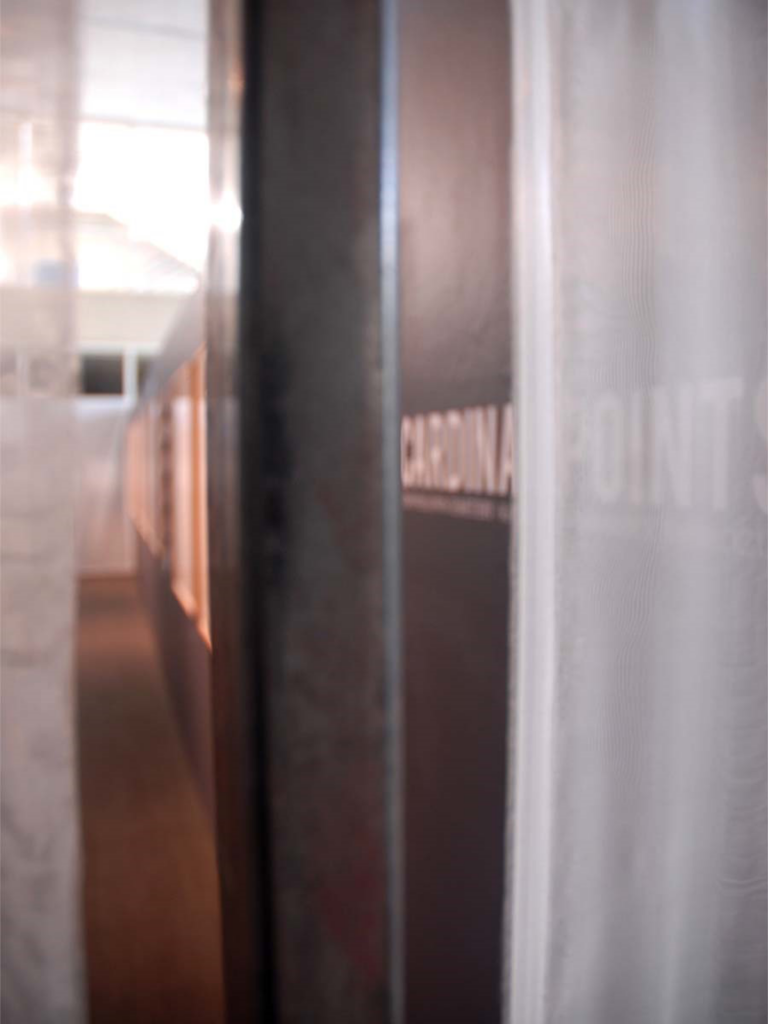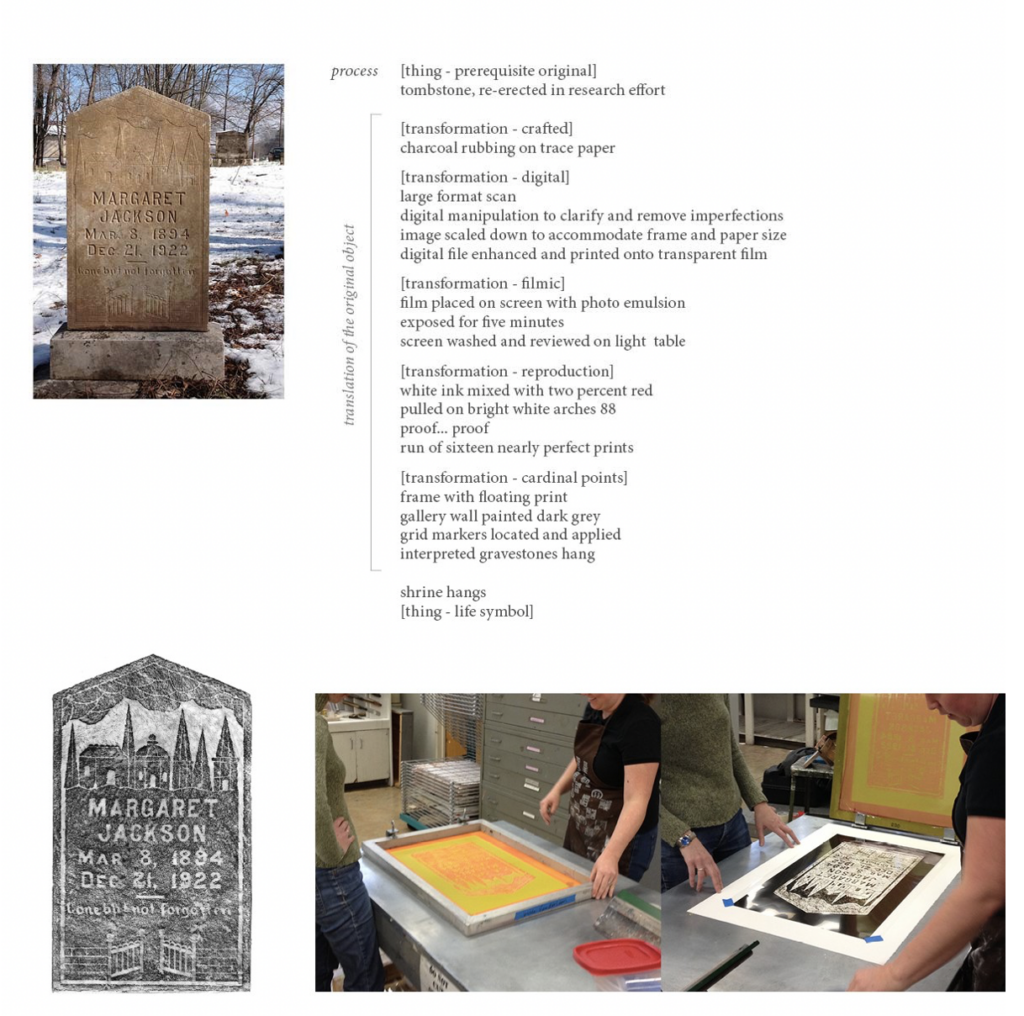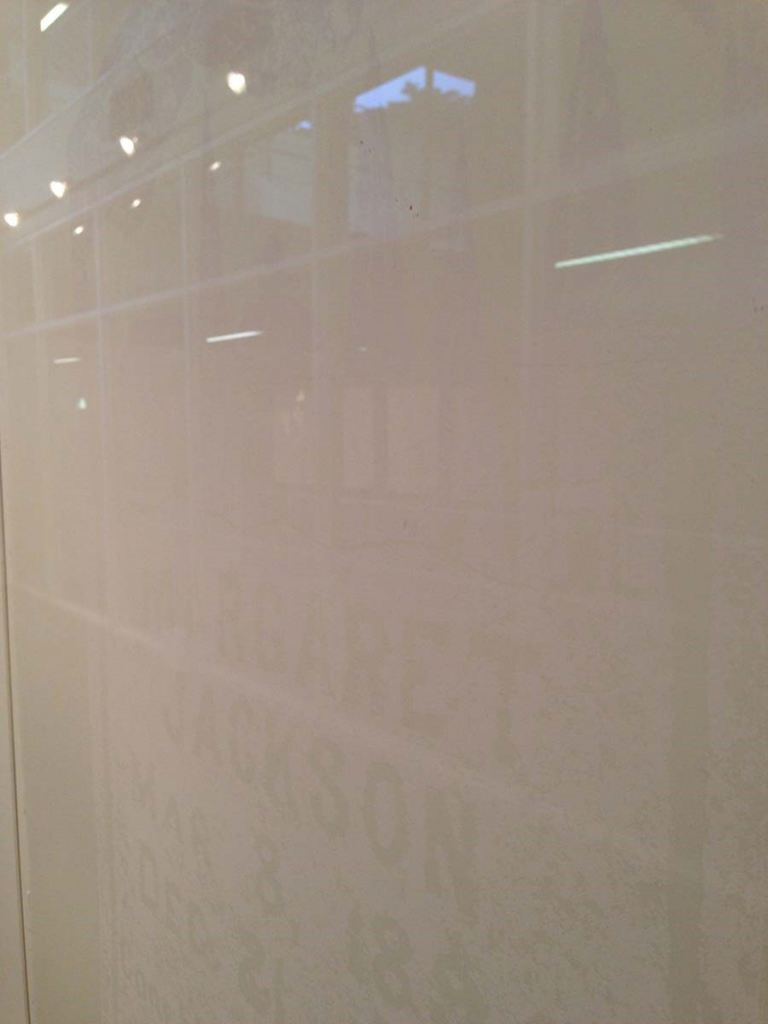Katherine Ambroziak
University of Tennessee, Knoxville aambrozi@utk.edu
The authenticity of a thing is the essence of all that is transmissible from its beginning, ranging from its substantive duration to its testimony to the history which it has experienced. Since the historical testimony rests on the authenticity, the former, too, is jeopardized by reproduction when substantive duration ceases to matter. And what is really jeopardized when the historical testimony is affected is the authority of the object.[1]
— Walter Benjamin, The Work of Art in the Age of Mechanical Reproduction
CARDINAL POINTS serves as a commentary on contemporary perception and physiological responses to historical places of memory. The installation was conceptualized as a spatial satire investigated through interpretive material processes focused on reproduction and authenticity. Motivated by the forgotten landscape of an abandoned local cemetery, the installation translates the formal, repetitive structure of the burial grounds as a spiritual typology that runs the risk of fading and ultimately being discarded. Comprised of nine repetitive white-on-white reproduced screen-prints and a single shrine artifact, the primary goal of the installation was to create, through a crafted simile, an authentic experience that is comparable to the original but distinctive for its new contemporary place location.
The notion of mechanical reproduction first came about as a reference to the perceptual condition of the headstones themselves which, lining rows of the cemetery ground, already display the characterization of repetitive copies. Through repetition, burial stones lose their individual identity and contribute to society’s inability to connect on a personal level. The reproductive processes practiced through the development of the installation similarly relate, transforming lives into patterns of letters and numbers through physical and digital acts of material transcription (rubbing, digitizing, processing, screen-printing, framing, hanging, observing, reflecting). Using white ink on white paper, the effect was not just to transform the original image of the headstone, but to virtually erase it, bringing it closer to the essence of the actual perceived condition of cemetery engagement. The objective was to consider whether, with the erasure of the substantive object, it would be possible to actually heighten the aura, the ghostly apparition or the soul of the material.
In contrast to the replicated printing, the shrine offers material variations – glass, iron shavings, candle wax, cork, ribbon, rose pedals, cotton, thread, scripted writing, and oxygen. Though these are also repetitive and gridded in their own sense, they offer more immediate tactile associations to the observer. Through such juxtaposition, CARDINAL POINTS incorporates multiple layers of transformation to create a contrast where authentic experience is questioned and thereby potentially rediscovered.

[1] Cardinal Points installation exhibit by Katherine and Brian Ambroziak, 2013, peripheral view

[2a] Burial marker of Margaret Jackson, Odd Fellows Cemetery, Knoxville; previously fallen and re-erected by research team, July 2012
[2b] Stone rubbing, black pastel chalk on bond, February 2013
[2c] Printmaking process, March 2013

Singular shrine, relics of a contained life unique to individual burial; interrupting pattern of repetitive grid in Cardinal Points installation exhibit

- Cardinal Points installation exhibit, peripheral view ii (from above)

- White-on-white print, straight-forward view rendering image invisible

- White-on-white print, oblique peripheral view revealing full graphic
[1] Walter Benjamin, “The Work of Art in the Age of Mechanical Reproduction,” in Illuminations, ed. Hannah Arendt, trans. Harry Zohn (New York: Schocken Books, 1968), 221.



